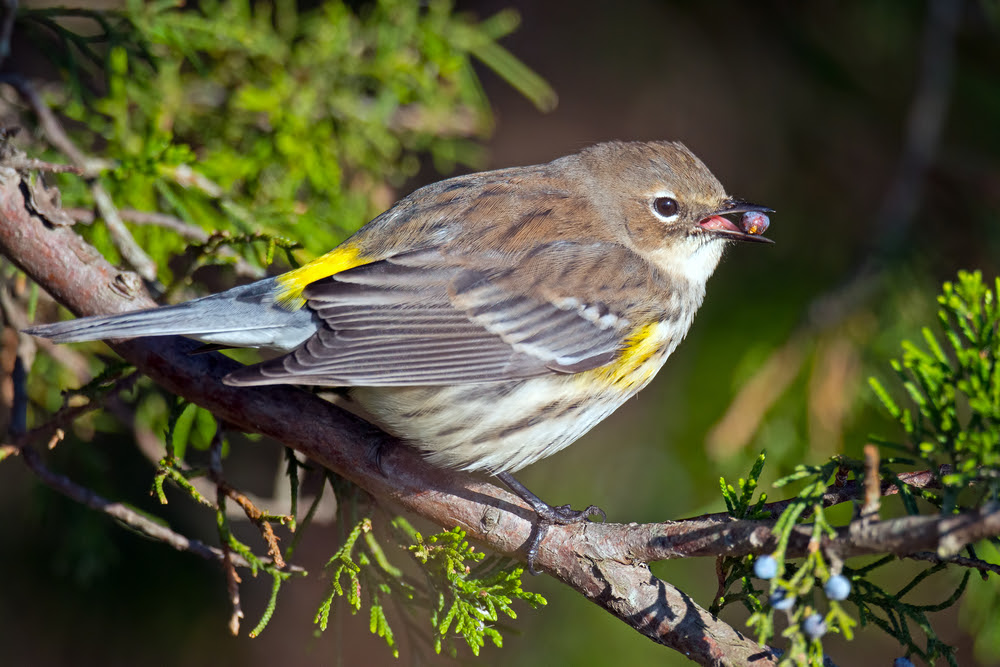Yellow-rumped Warbler, Setophaga coronata
Bill Rowe
Here in early October, most of our 35 species of warblers are getting close to finishing their passage through Missouri; the great majority of them are now farther south and heading for the tropics, with only some stragglers still remaining for a week or two. Not so the Yellow-rumped Warbler: its annual fall invasion is just beginning, with groups of dozens traveling through the woods along with other migrants like Ruby-crowned Kinglets and residents like titmice and chickadees. In a favored spot, their soft check or chep notes may come from all directions at once as they jump around after any available insects, plus berries such as those of red cedar and poison ivy. Their migration will continue well into November, and, unlike the other warblers that nest in the boreal forests of Canada and Alaska (the “taiga”), some Yellow-rumps will routinely stay here for the winter. These boreal Yellow-rumps are also called “Myrtle” Warblers, an attractive name that comes from one of their food sources on the east coast. In our western mountains (the Rockies, the Sierras, etc.) lives another subspecies known as “Audubon’s” Warbler, which has shown up in Missouri on occasion.
IDENTIFICATION: Once you have managed to get a good look (not always easy with warblers), you may see the clearly-defined bright yellow patch on the lowest part of the back above the tail (referred to as the “rump” on birds). But even without seeing the yellow rump, you will pick up the combination of blue-gray (spring) or brownish (fall) plumage, two wingbars, white underparts with streaks and a yellowish patch near the shoulder, and a dark face with a broken white eyering. (See above for a typical fall bird, and below for a spring male and also an “Audubon’s” Warbler with yellow throat.)
ST. LOUIS STATUS: An abundant migrant in April and October, not just in the countryside but in parks and yards as well. Through the winter, some can be found roaming the woods with other small birds, often in bottomlands near creeks and rivers.
Learn more and listen to the songs and calls of Yellow-rumped Warblers here.




